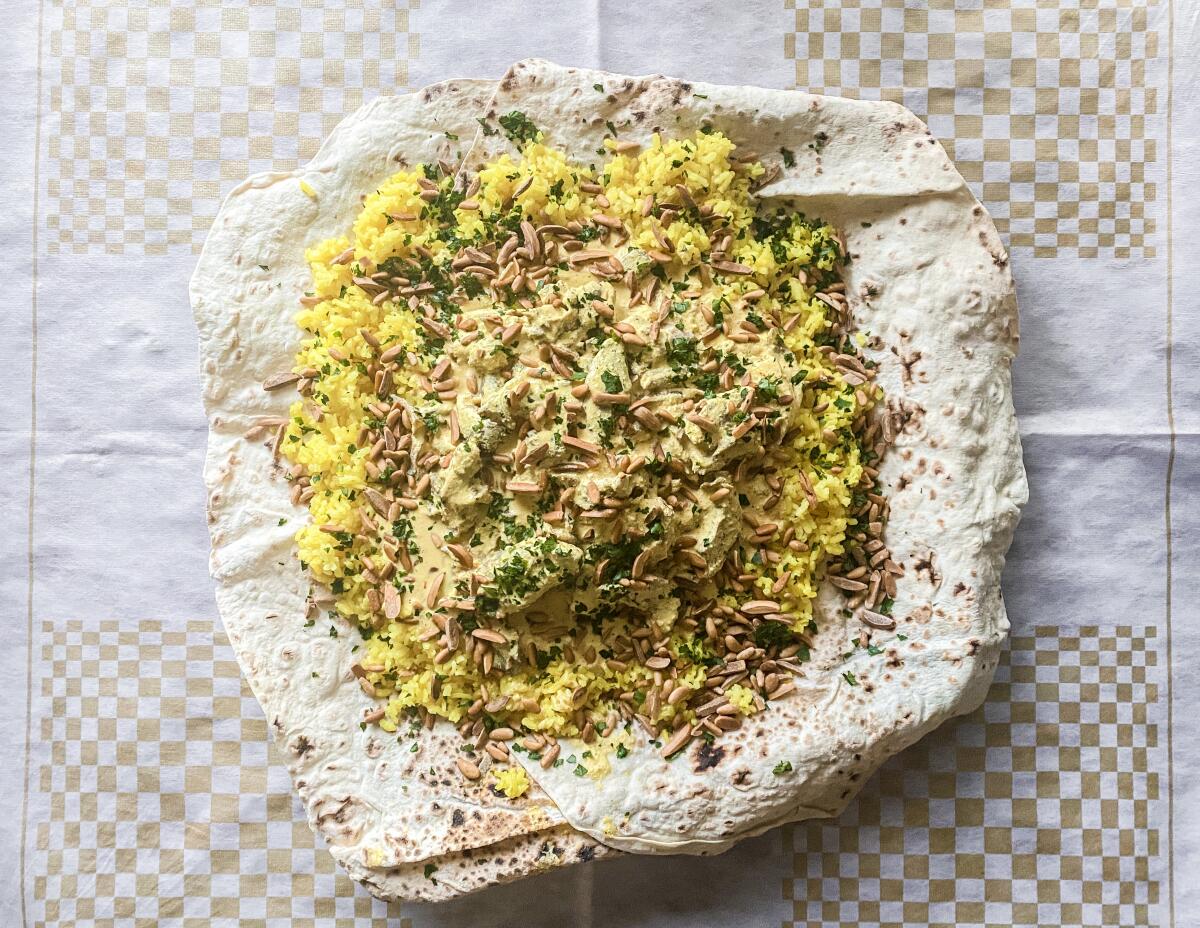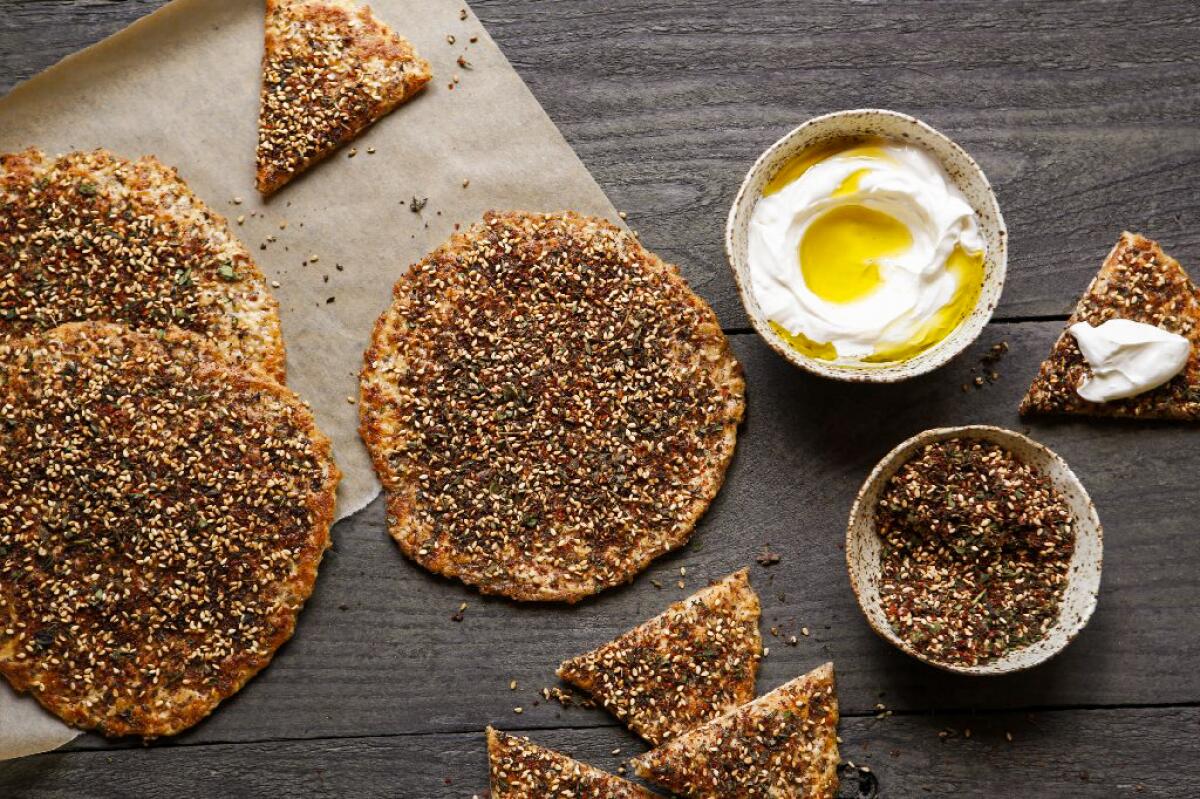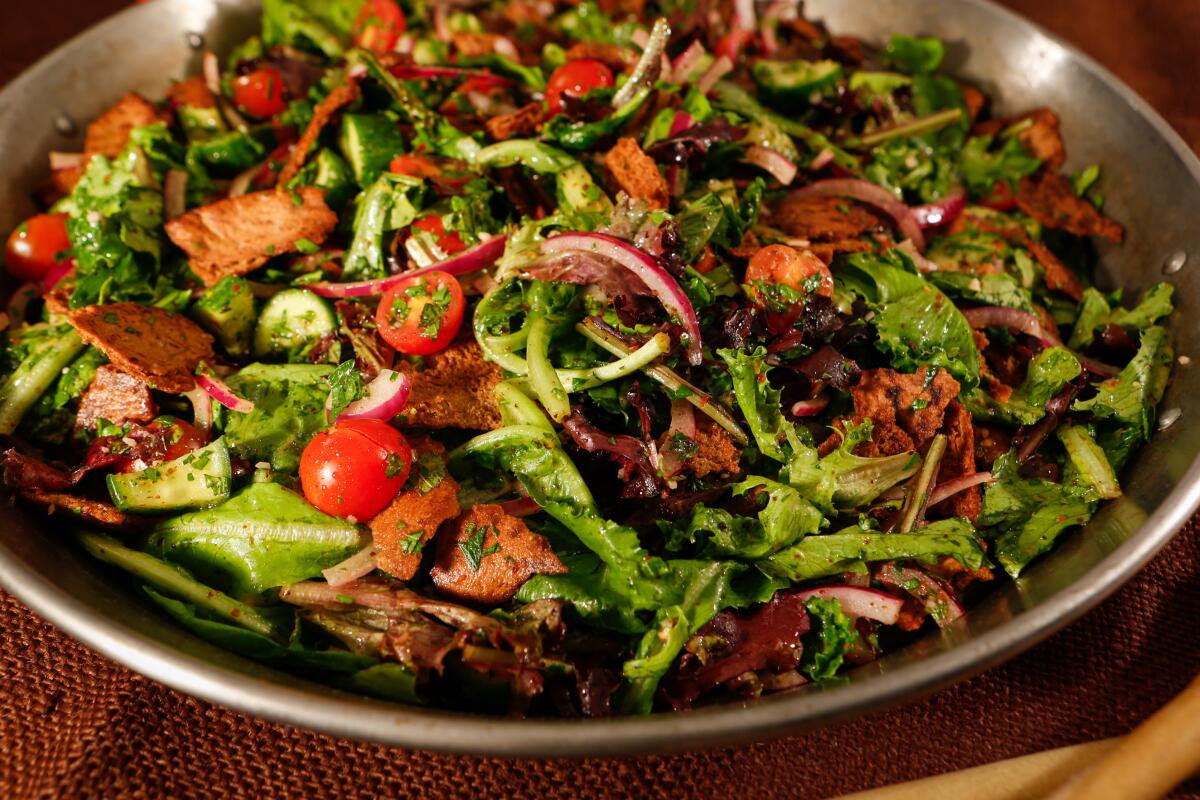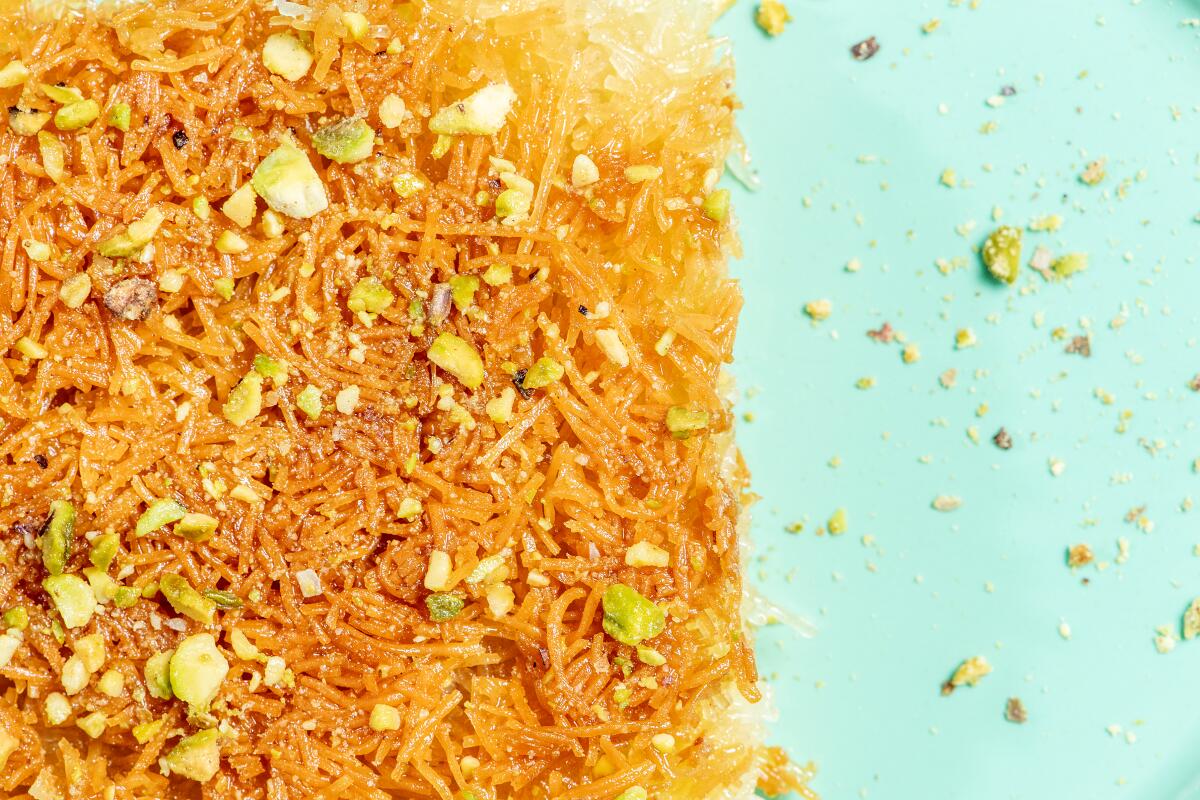Easter again? 5 recipes for an Arab spring feast

- Share via
I have been engaged in a clandestine yearslong effort to steal Easter away from my mother, who has hosted the feast our entire lives. It’s not like she does a bad job. In fact, nobody can create a feast as good in as little time. But at some point we all have to let these matriarchs rest. Serve them for a change. And Easter comes with much lower stakes than Thanksgiving or Christmas.
You are reading our Cooking newsletter
Sign up to get a taste of Los Angeles — and the world — in your own home and in your inbox every Friday
You may occasionally receive promotional content from the Los Angeles Times.
Before I go further, I know what you’re thinking: Easter was five weeks ago.
Wrong! Due to centuries-old disagreements that are too ridiculous to get into (but you can read more about here), the Orthodox Church often celebrates the holiday on a different Sunday.
Here’s my guide to the perfect Easter (or really any spring) feast.
It’s all about lamb. That’s the centerpiece. This year, I’ll be cooking my lamb in yogurt with pine nuts and rice, plated over bread. It’s a traditional Jordanian dish called mansaf, and it’s perfect for holidays, big groups and special guests. If you want something similarly festive but built around chicken instead, try maqluba (which translates literally to “upside down”).
At any gathering and especially this one, we’ll be serving hummus. I am a total snob about it. You see lots of different takes on hummus. I’ve tried them all. Trust me: Best to keep it simple.
We also serve mana’esh, a savory flatbread and za’atar dish that my cousins, as children, called “Lebanese pizza.” It’s light, flavorful and, most important, straightforward to make.
Then there’s the fattoush, a mixed green salad that will teach you everything you need to know about freshness. (My mom always says, just add everything you have that’s green.)
What could be more fitting for spring? To me, the thing that really elevates a fattoush is the special zest and brightness that sumac brings to the dressing.
As an aside, a friend’s father recently taught me an important lesson about dressing. If you make it with breadcrumbs, it will adhere better to your salad and not just pool at the bottom of your bowl.
When it comes time for dessert, here’s the deal. When Arabs celebrate feasts like Easter and sometimes Eid, we want to have ma’amoul. But my attempt to make it went horribly wrong last year (I asked both my mom and aunt for recipes and chose the wrong one — I shan’t say more due to fear for my life) and I won’t even challenge you to try. Instead, restaurant critic Bill Addison wrote an ode to this perfect cookie and where to find it.
But I have a great backup for you: knafeh. (That is not a silent k!) You’ll find this treat at many or even most Arab holidays. It’s crunchy, creamy, nutty, sweet. No more description required.
Eating out this week? Sign up for Tasting Notes to get our restaurant experts’ insights and off-the-cuff takes on where they’re dining right now.
Mansaf
Cooking your lamb in water before a yogurt sauce, as Bill Addison’s recipe requests, gives it a lighter, creamier touch. Serve this feast atop flatbread and a bed of rice. Traditionally it was made with a whole lamb; nowadays it is more often than not made with a shoulder, leg or shanks.
Get the recipe.
Cook time: 2 hours. Serves 6.
Cracked Wheat Mana’esh (Flatbread With Za’atar)
Here is a California version of this Middle Eastern staple featuring whole-grain flour, cracked wheat, good olive oil and fresh herb za’atar. Hot off the griddle or grill with a spoonful of lebni (kefir cheese), and you’re pretty much transported.
Get the recipe.
Cook time: 35 minutes. Makes 8 flatbreads.

Enjoying this newsletter?
Consider becoming a Times subscriber.
Hummus With Tahini
The trick to hummus, I say, is to keep it simple, and Paula Wolfert’s recipe does just that. Make your life even easier by subbing in canned chickpeas (drain them first) for dried ones you have to soak. See if your eaters notice the difference (I bet they won’t).
Get the recipe.
Cook time: 2 hours. Makes about 4 cups.
Fattoush
Make this in the biggest bowl you have. This sprightly, crunchy recipe from Amy Scattergood guides you through the greenest salad you’ve ever tasted. “Fatta” means torn to pieces, which is what you will do with stale pita bread before you season and toast it.
Get the recipe.
Cook time: 40 minutes. Serves 4 to 6.

Knafeh Nabulseyeh
A shredded filo pastry filled with firm, white, salty nabulsi cheese. Or fill it just with nuts and cinnamon (that’s “Arabic knafeh”). Nabulsi cheese is not widely available, though, so Sami Tamimi’s and Tara Wigley’s recipe uses a combination of firm mozzarella, ricotta and feta. Find frozen kataifi at markets that specialize in Middle Eastern ingredients, such as Kozanian’s Ranch Market in Glendale.
Get the recipe.
Cook time: 2 hours. Serves 6 to 8.
Have a cooking question?
Eat your way across L.A.
Get our weekly Tasting Notes newsletter for reviews, news and more.
You may occasionally receive promotional content from the Los Angeles Times.





